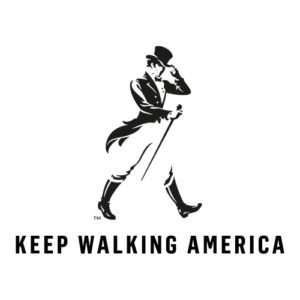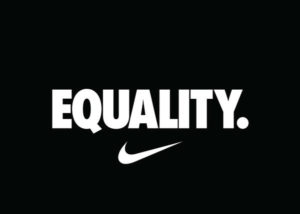“If you want to understand how a lion hunts, don’t go to the zoo. Go to the jungle.” – Jim Stengel
Besides the sports side (because I do enjoy American football), watching the Super Bowl has always left astonished. Considering the size of the event (everything is big and glorified), the amount of media, celebrities, lights, technology, and of course ADS, the Super Bowl is a kaleidoscope that is quite overwhelming and difficult to digest. Maybe it’s because I was not raised in an American household and don’t have the American factor in me, or maybe because I found it tiring that less than 10 percent of the broadcast is dedicated to the actual sport.
Yes, only 10 percent of Super Bowl LI was the actual game and ads represented twice as much time: 24 percent! No wonder why everyone is excited to watch the commercials and companies pay fortunes ($5 million per 30 seconds – no wonder why people are mad these days) to air during America’s night.
I have to admit that watching the ads is a fun and interesting exercise. With big budgets, companies produce very short films that can be very compelling. And, observing the ads, one can acknowledge and understand the current trends in society.
For obvious reasons, some of the ads decided to get political. With a vast number of Americans still ruminating about the most divineness presidential election in the last decades, firms needed to get on the political bandwagon. But the question is where do companies want to stand?
To begin with, firms adjust their marketing strategies to the real world, and today we live in an unprecedentedly political uncertain world. Consumers want to be associated with a brand that is connected to their reality, and today that reality is along the political context. Marius Luedicke, a marketing professor at City University in London, explains that this type of cultural branding is aimed to position the brand “either as an ally to solve a functional problem, evoke emotions, or solve a cultural problem”.
And, the political Super Bowl ads received tons of free publicity. Budweiser, Airbnb, and eve n an unknown company, 84 Lumber, got tons of buzz during several days. According to attention analytics company iSpot.tv, all of the political ads garnered at least a 61% “positive” sentiment.
n an unknown company, 84 Lumber, got tons of buzz during several days. According to attention analytics company iSpot.tv, all of the political ads garnered at least a 61% “positive” sentiment.
I have my doubts when mixing politics and private companies, especially in the US with the lobbies, fundraising, or the Citizen United case vs FEC. In the end, behind every layer, a company’s unique goal is to make profits. The usage of a political message is to get a reaction from the public and potentially increase their sales. Super Bowl ads aren’t acts of activism; I would have preferred the $9.8 million dollars spent on the Budweiser ad to go to a foundation or an NGO. Here is a great parody of SNL about companies wanting to use a political message in their ads disregarding completely the product.
But, as I mentioned before, Super Bowl ads are a reflection of the society, and if Budweiser, Airbnb, and Coca-Cola take a political side it’s because they know where the majority of the consumers stand. The majority of older voters (ages 65 and over) supported Trump, unlike Clinton who won the majority of younger voters (ages 18-29) and the popular vote by over 3 million votes on November 8th. Younger generations tend to be more progressive and are more inclusive to diversity, companies will logically side with the future or stay quite. Just ask the CEOs of Uber and Under Armour.
References:
Ago, Douglas Quenqua Added 28 Hours, 2017 February 13, and 2017 February 10. “SNL Mocks Political Ads from Super Bowl LI with Bruising Cheetos Sketch.” Campaign US. N.p., n.d. Web. 13 Feb. 2017. http://www.campaignlive.com/article/snl-mocks-political-ads-super-bowl-li-bruising-cheetos-sketch/1424005
Berg, Madeline. “The Internet Loved Those Political Super Bowl Ads.” Forbes. Forbes Magazine, 06 Feb. 2017. Web. 13 Feb. 2017. http://www.forbes.com/sites/maddieberg/2017/02/06/the-internet-loved-those-political-super-bowl-ads/#6b049b920060
“Now Under Armour Has a Trump Problem, Too.” HeraldNet.com. N.p., 10 Feb. 2017. Web. 13 Feb. 2017. http://www.heraldnet.com/business/now-under-armour-has-a-trump-problem-too/
Savransky, Rebecca. “New Nike Ad: ‘Equality Has No Boundaries’.” TheHill. N.p., 13 Feb. 2017. Web. 13 Feb. 2017. http://www.inc.com/chris-matyszczyk/nike-unlike-under-armour-decides-to-take-a-firm-political-stance.html
Tyson, Alec, and Shiva Maniam. “Behind Trump’s Victory: Divisions by Race, Gender, Education.” Pew Research Center. N.p., 09 Nov. 2016. Web. 13 Feb. 2017. http://www.pewresearch.org/fact-tank/2016/11/09/behind-trumps-victory-divisions-by-race-gender-education/
“Why Are Adverts Becoming More Political in the Age of Trump and Brexit?” The Irish News. N.p., 10 Feb. 2017. Web. 13 Feb. 2017 http://www.irishnews.com/magazine/2017/02/10/news/why-are-adverts-becoming-more-political-in-the-age-of-trump-and-brexit–928438/



6 Responses to Becoming Political